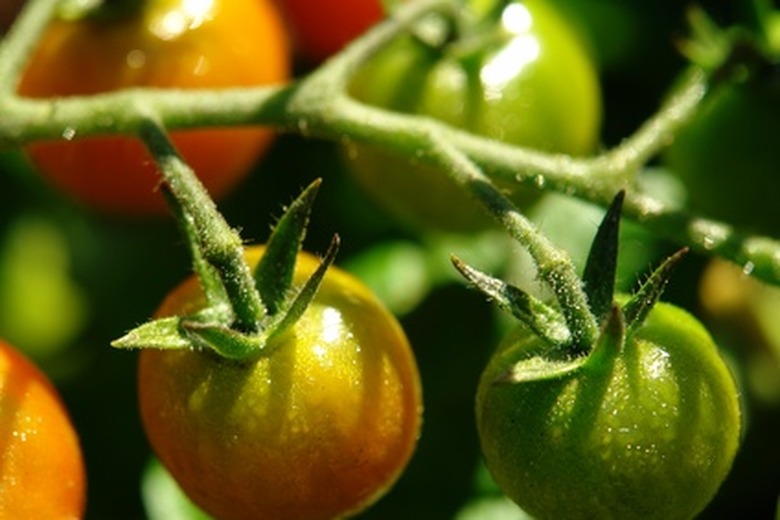Tomato Planting In Alabama
Things Needed
- Trowel or shovel
- Compost, manure or other organic matter
- Fertilizer, such as an 8-8-8 or a 4-12-12
- Ammonium nitrate
- Stakes or cages
Tomatoes are a favorite among backyard gardeners because the taste is superior to what you can buy at the grocery store. In Alabama, the hot, humid summers are a perfect fit for growing tomatoes. The earliest time to plant tomatoes in Alabama is in April, according to the Alabama Cooperative Extension System. They can also be planted in May or in June for a later harvest.
Step 1
Purchase young tomato plants to be transplanted into your garden. According to the Alabama Cooperative Extension System, not all tomato cultivars will grow well in the state. The extension system recommends several varieties that have grown well in Alabama, including Celebrity Mountain Supreme, Amelia and Sunpride.
- Tomatoes are a favorite among backyard gardeners because the taste is superior to what you can buy at the grocery store.
- According to the Alabama Cooperative Extension System, not all tomato cultivars will grow well in the state.
Step 2
Select a site for growing tomatoes. With its hot summers, the temperature is Alabama is good for tomatoes. Still, tomatoes need plenty of light, so so look for a spot that gets sun for most of the day.
Step 3
Dig a hole 2 feet deep and 12 inches wide using a shovel or trowel.
Step 4
Mix together two to three parts soil from the hole you dug with one part compost or manure. Use your hands or a trowel to make sure it is well blended.
Step 5
Add 3/4 cup of a complete fertilizer such as an 8-8-8 or a 4-12-12 to the soil mixture. Mix well to make sure all the components of the soil are well blended. This fertilizer will complement the soil native to much of Alabama and give it the nutrients necessary for tomatoes to grow and thrive.
- Select a site for growing tomatoes.
- Mix together two to three parts soil from the hole you dug with one part compost or manure.
Step 6
Place a tomato plant in the hole, setting it down firmly. Make sure the bottom of the plant makes good contact with the hole.
Step 7
Fill the hole in with the soil mix you created. Pack the soil down firmly so no air bubbles remain in the soil because they can harm the plant and hinder growth.
Step 8
Water the plants immediately after planting to settle the soil and help them establish their roots. Tomatoes need about 1 inch of water per week. Alabama typically gets enough rainfall in the summer months to meet the plants' needs, but be sure to water them during extended dry spells or if they appear to be wilting.
- Place a tomato plant in the hole, setting it down firmly.
- Pack the soil down firmly so no air bubbles remain in the soil because they can harm the plant and hinder growth.
Step 9
Sprinkle 1 tbsp. of ammonium nitrate around the plant in an 8-inch diameter. Take care not to let the ammonium nitrate come in contact with the stem of the plant. Reapply the ammonium nitrate in the same manner every 4 to 6 weeks to encourage growth and tomato production.
Step 10
Place cages or stakes around your plants to provide support. If you are using a stake, place it 4 inches from the plant and drive it 10 inches to 12 inches into the ground.
Tip
If you are planting tomato plants grown in peat pots, they do not need to be removed from the pot before being set in the ground. Tomatoes plants should be spaced 18 to 24 inches apart. Rows should be 3 feet to 4 feet apart. Mulch is not required for growing tomato plants, but placing it around your plants can help them better conserve moisture, which can be difficult at the height of summer in Alabama. Mulch can also help stymie weed growth in your tomato bed.
